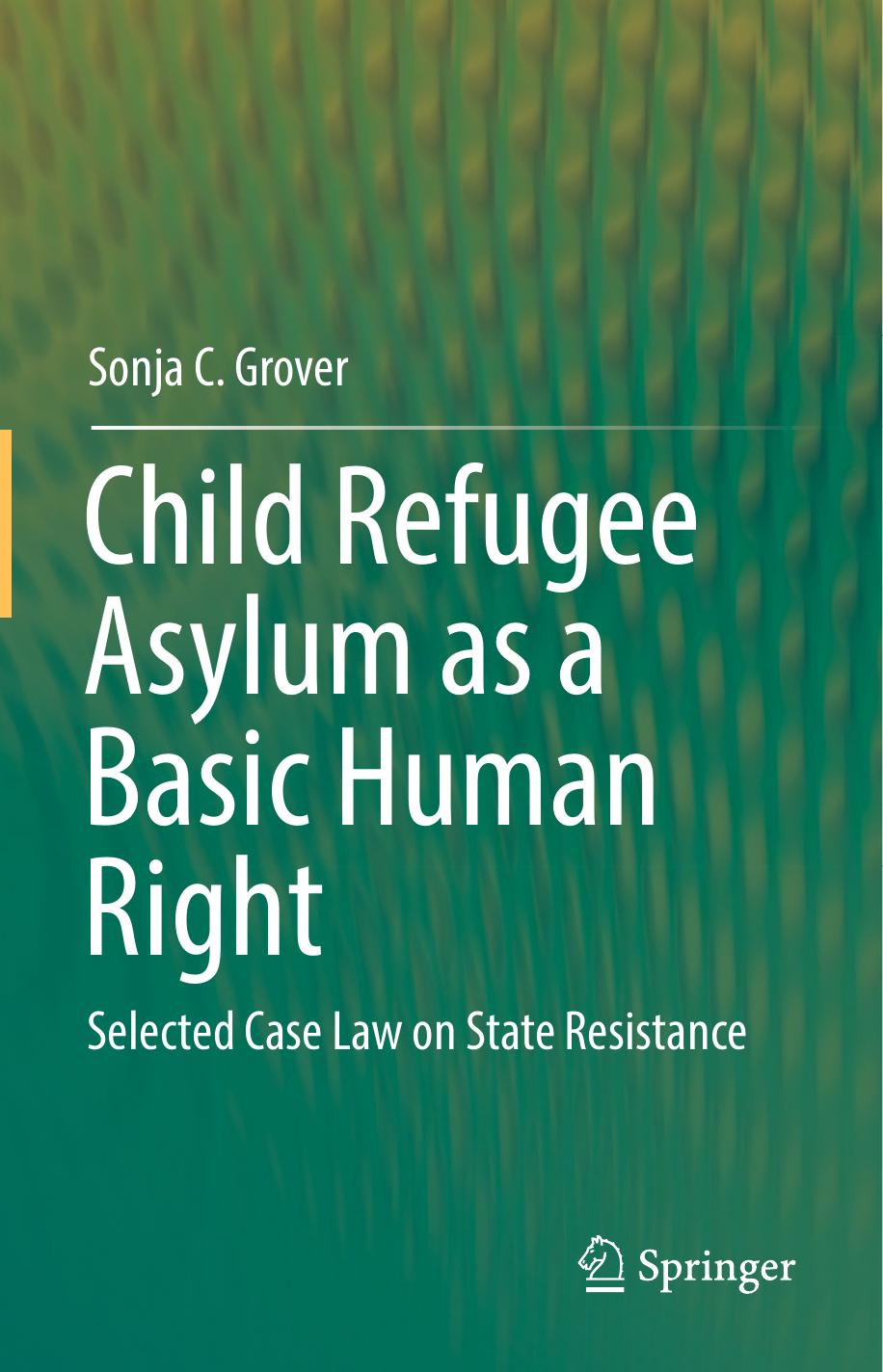Child Refugee Asylum as a Basic Human Right by Sonja C. Grover

Author:Sonja C. Grover
Language: eng
Format: epub, pdf
Publisher: Springer International Publishing, Cham
Next we consider two cases that illustrate violation of refugee rights of individual child asylum seekers through strategies that essentially, in the first instance, targeted the collective “unaccompanied child refugee asylum seekers” and were not in truth fashioned to properly weigh the merits of the individual case and its unique fact pattern. In the first case the U.K. argued that an immigration officer’s judgment or belief alone was in the first instance dispositive of whether an individual was an unaccompanied child refugee asylum seeker (person under 18 in which instance that person would be protected in certain respects by a specific domestic immigration/asylum statute that stipulates that a child asylum seeker arrived at the border or irregularly entered cannot be held in a detention facility longer than 24 h). That is the U.K. argued that the term ‘child’ (person under 18) in the particular U.K. immigration/asylum statute relating to detention of an asylum seeker was not to be interpreted as a status that had to be determined from the outset based on objective factual evidence (i.e. professional age assessments with some reasonable degree of reliability and validity, valid relevant documents as to chronological age of the asylum seeker or other factual sources that might be available). Here the U.K. government attempted to greatly delay what should have been treated as high priority child asylum applications; those most often involving older children namely teenage refugee asylum seekers. This was accomplished by denying these especially vulnerable children, for a significant period, recognition of their membership in the relevant ‘particular social group’ (that social group being ‘unaccompanied child refugee asylum seekers’ including in respect of those who were prima facie child refugees but not acknowledged as such). 37 The latter is a form of denial of the collective asylum seeking and certain other rights that the individual holds and shares with other members of the particular social group in question (denial of the group rights of unaccompanied child refugee asylum seekers). Thus there is occurring in parallel a violation of collective child refugee rights and also of the basic human rights of the individual child refugee asylum seeker members. The effect hoped to be achieved by the U.K. government in adopting this approach, it would seem, was to deter other unaccompanied child refugee asylum seekers from entering the U.K. in search of refuge even where they were, on available credible evidence, prima facie unaccompanied children and refugees. The assumption by the U.K. government likely was then that news would filter out to other unaccompanied child refugee asylum seekers in the European Union outside the U.K., and perhaps also even at the point of origin in some cases, that the U.K. would not be a reasonable possibility as an asylum country (i.e. the latter given the anticipated low rate of success for members of the social group ‘unaccompanied child refugees asylum seekers’ in obtaining asylum in the UK). The second case concerns greatly delayed professional age assessments and failure to treat the child complainants
Download
Child Refugee Asylum as a Basic Human Right by Sonja C. Grover.pdf
This site does not store any files on its server. We only index and link to content provided by other sites. Please contact the content providers to delete copyright contents if any and email us, we'll remove relevant links or contents immediately.
Rewire Your Anxious Brain by Catherine M. Pittman(18554)
Talking to Strangers by Malcolm Gladwell(13232)
The Art of Thinking Clearly by Rolf Dobelli(10231)
Mindhunter: Inside the FBI's Elite Serial Crime Unit by John E. Douglas & Mark Olshaker(9206)
Becoming Supernatural by Dr. Joe Dispenza(8127)
Change Your Questions, Change Your Life by Marilee Adams(7638)
Nudge - Improving Decisions about Health, Wealth, and Happiness by Thaler Sunstein(7622)
The Road Less Traveled by M. Scott Peck(7524)
The Lost Art of Listening by Michael P. Nichols(7411)
Enlightenment Now: The Case for Reason, Science, Humanism, and Progress by Steven Pinker(7240)
Mastermind: How to Think Like Sherlock Holmes by Maria Konnikova(7231)
Win Bigly by Scott Adams(7097)
The Way of Zen by Alan W. Watts(6509)
Daring Greatly by Brene Brown(6449)
Big Magic: Creative Living Beyond Fear by Elizabeth Gilbert(5616)
Grit by Angela Duckworth(5525)
Ego Is the Enemy by Ryan Holiday(5297)
Men In Love by Nancy Friday(5162)
Altered Sensations by David Pantalony(5048)
